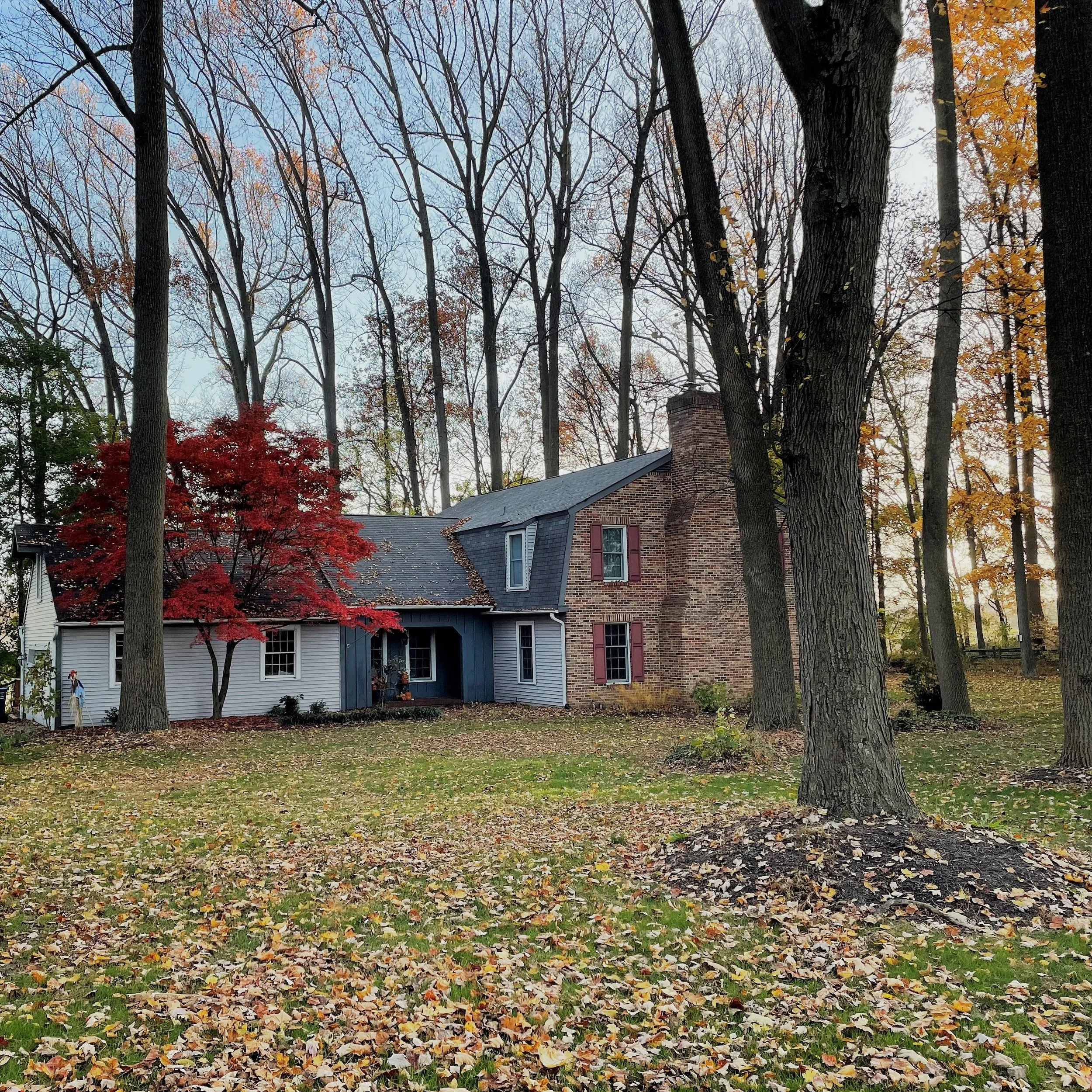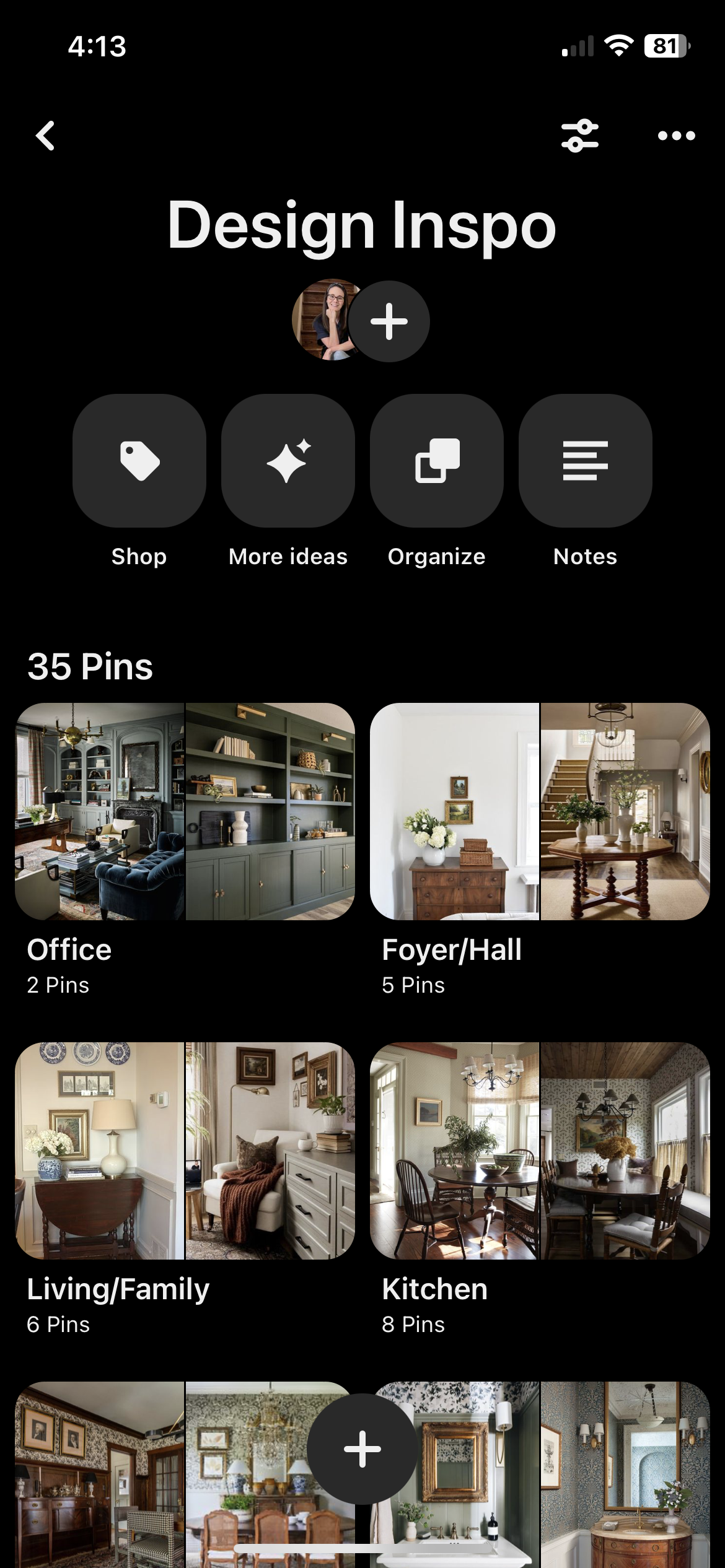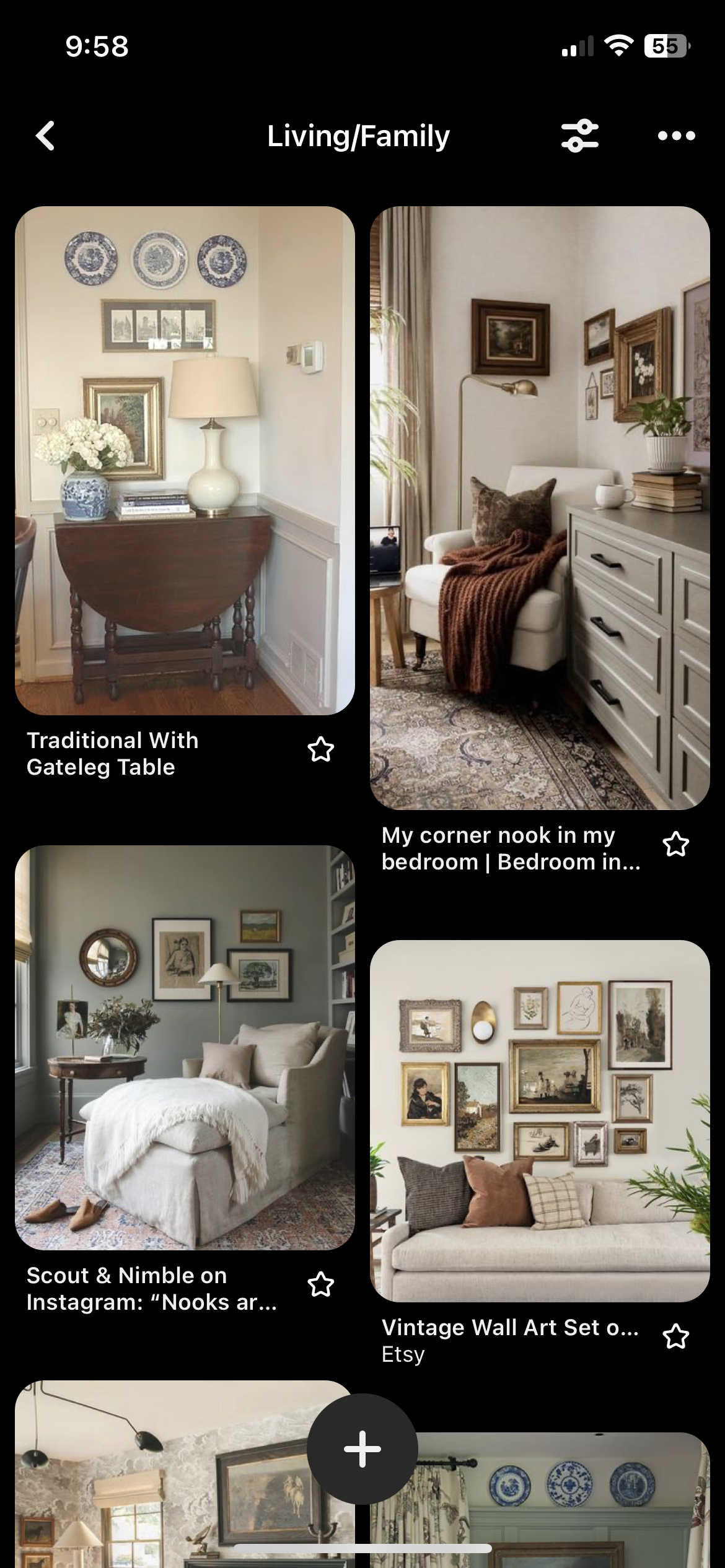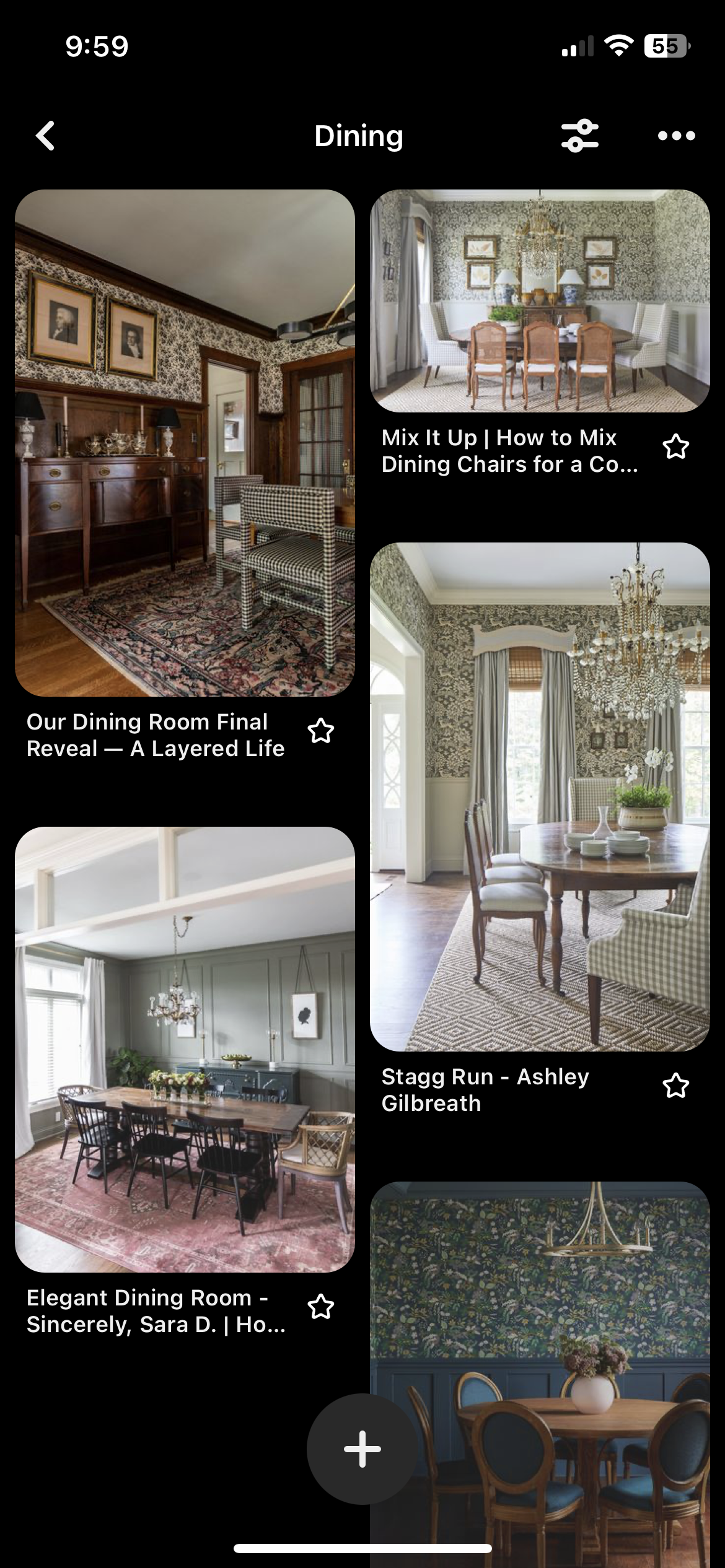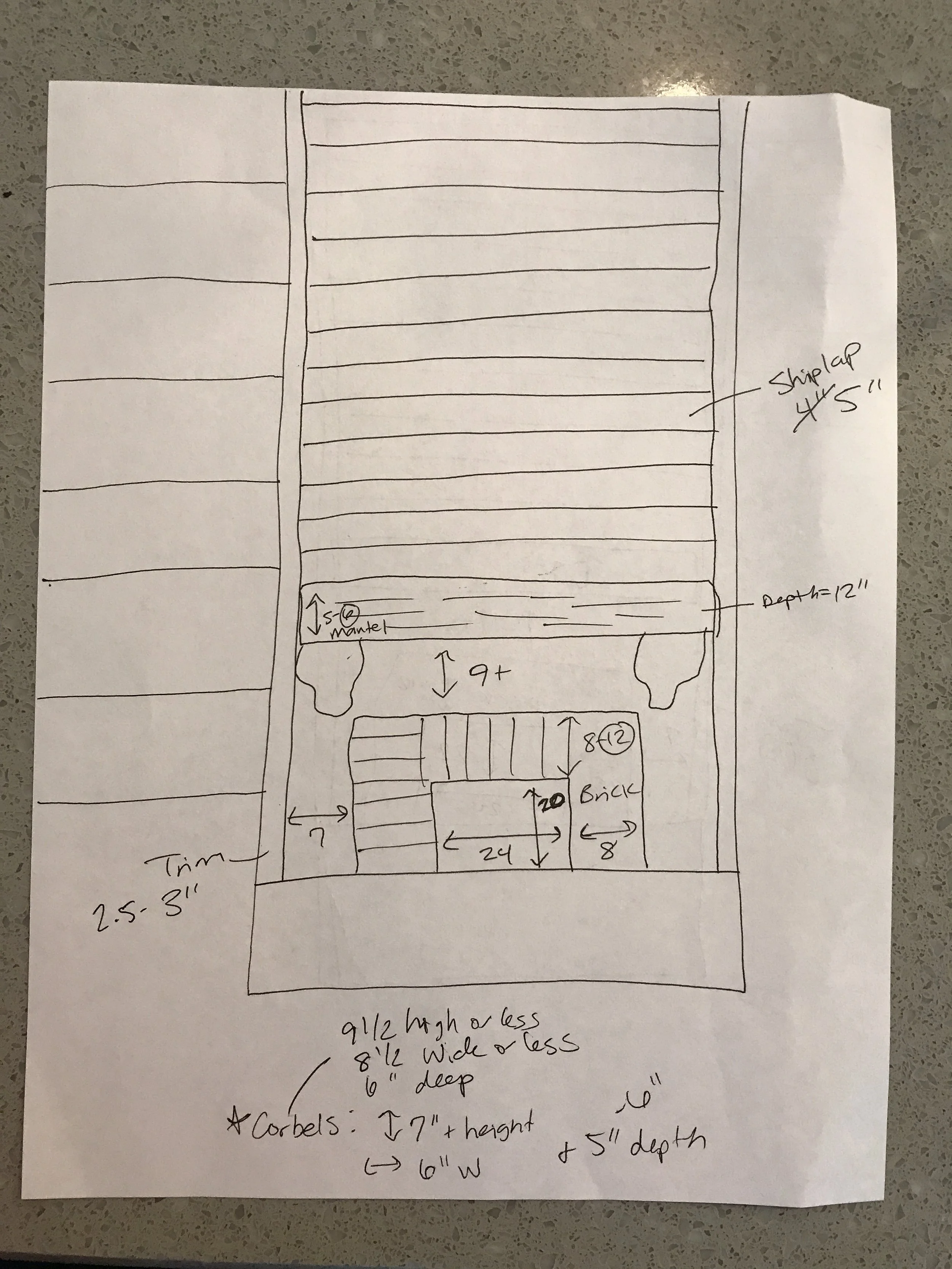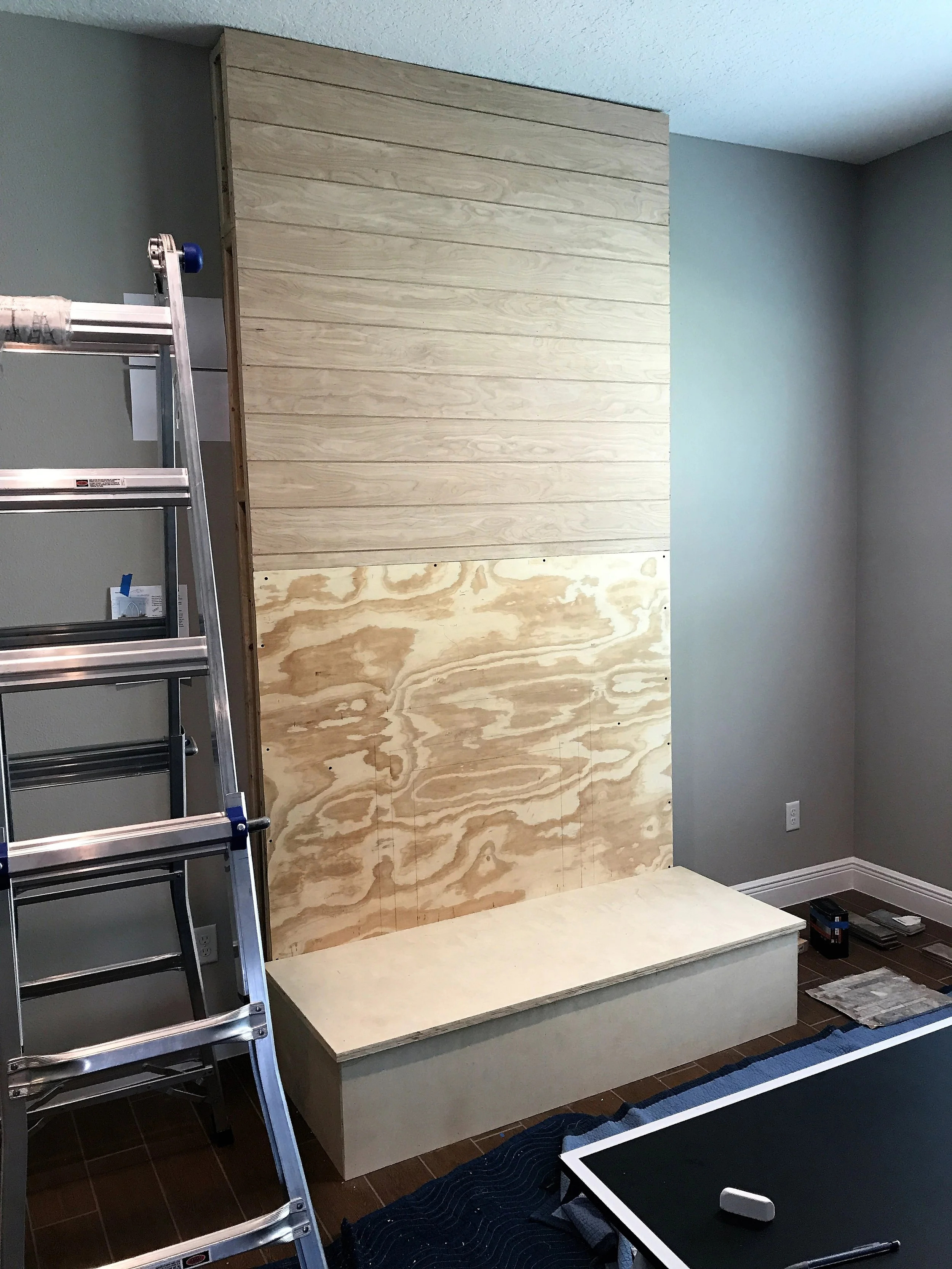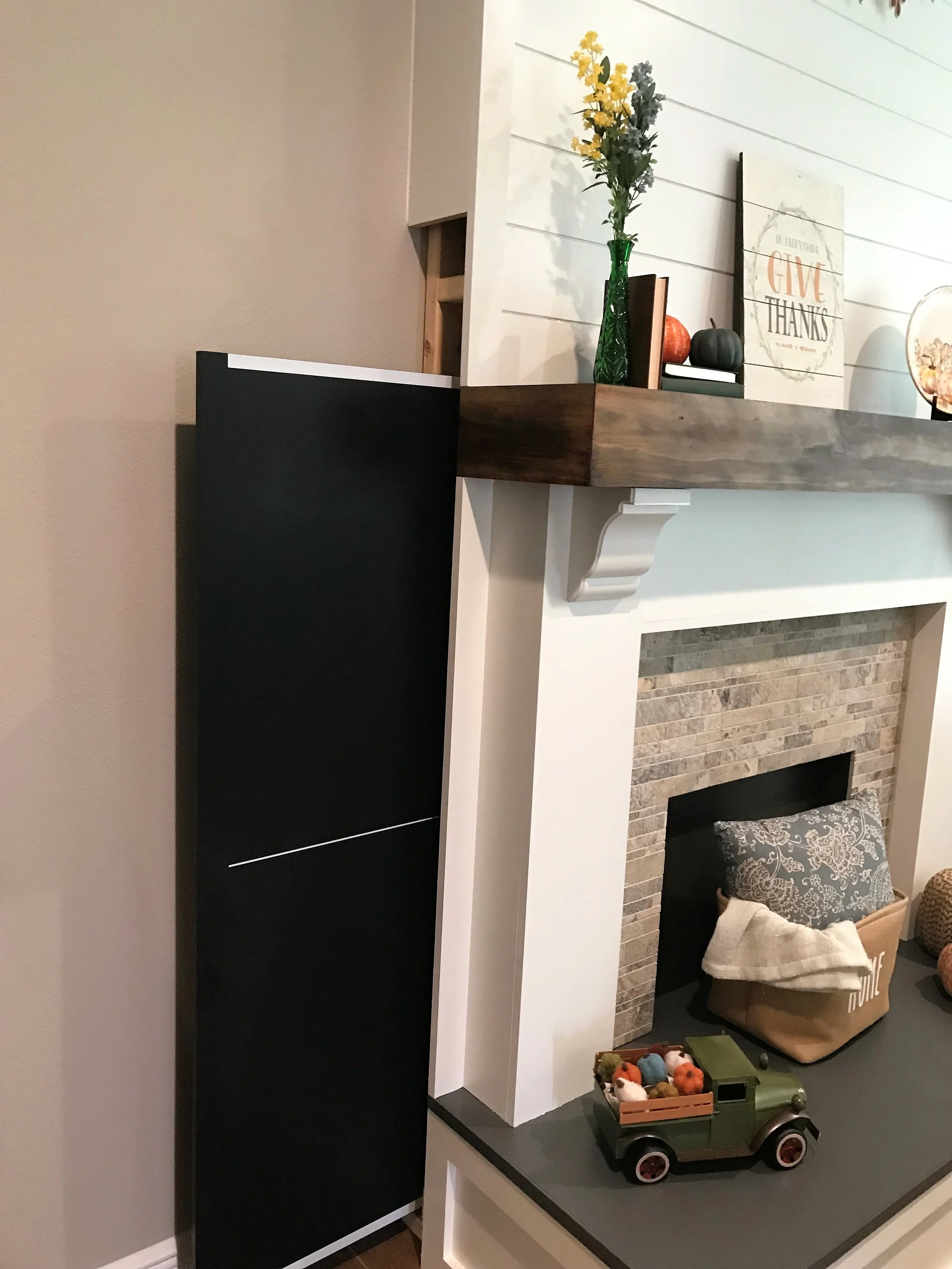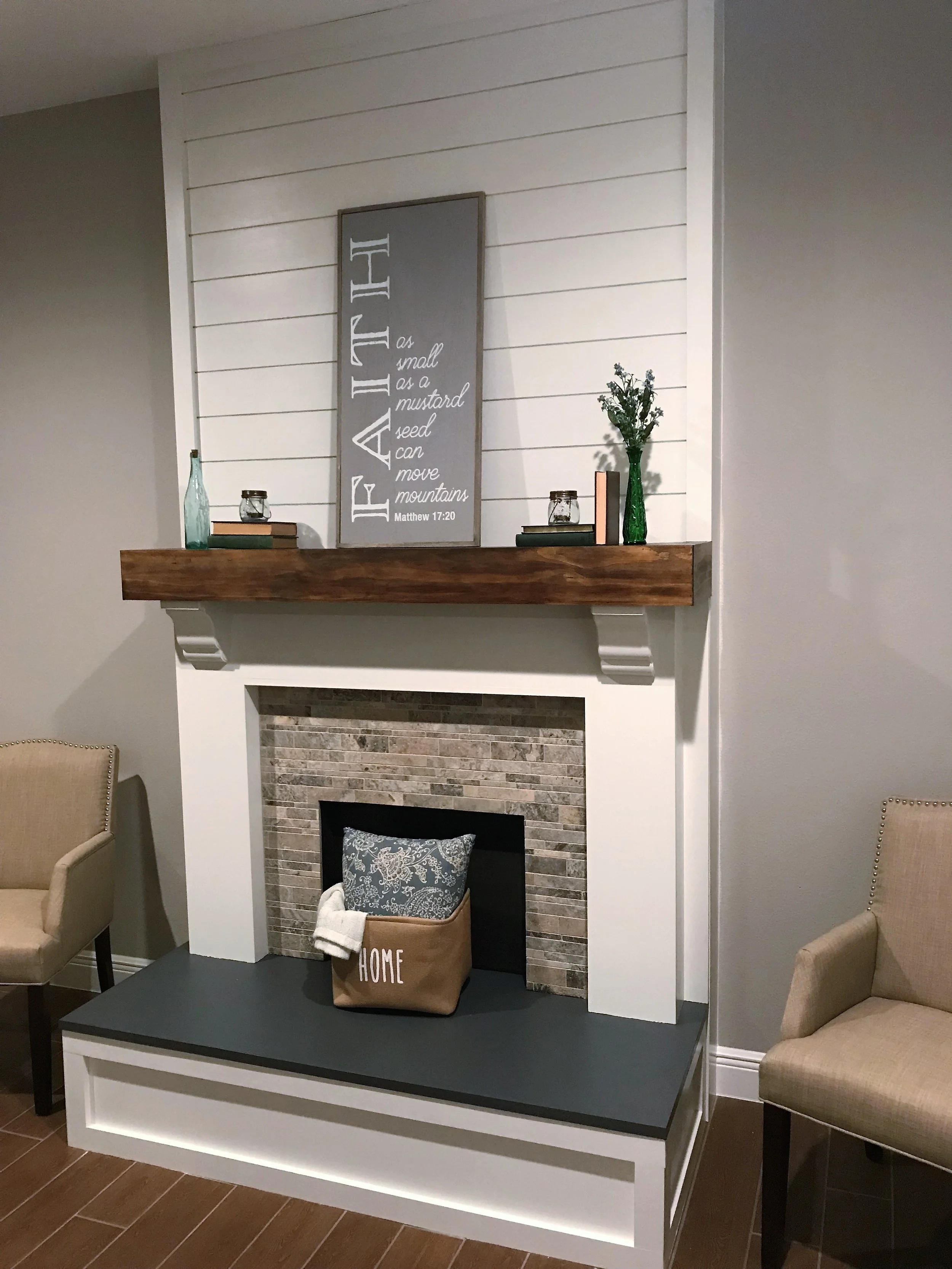Design Process: Where to Find Design Inspiration & How to Define Your Style
Are you lost on where to get design inspiration for your home? Or do you have so many ideas you don't have a focus or defined style? Either way, you've come to the right place. In this post, I am divulging how I get the creative juices flowing, and then how I reign them in to define my style goals for a space.
Having design inspiration is essential to the process, but it's easy to get carried away with ideas and lose focus. With design, you need a specific goal in mind for each space - a design concept as we designers refer to it. And how you develop that design concept is a process in itself. I will be discussing how to develop a design concept in more detail in my next post, but for now, we will explore the initial influencers of the design concept: ideas and inspiration, as well as design aesthetic and function.
Where to Find Interior Design Inspiration
There are many means for finding design inspiration. Below are my usual go-to sources for ideas:
Your Home
This may seem obvious, but people often forget it - or at the very least, avoid and neglect it. But your existing home should be considered when creating the design. This includes its exterior style, interior features, layout, location, history, and story.
The inside does not necessarily have to match the outside, especially if you are redesigning that, too. But if you're leaving the exterior as is, I have to say I am partial to a home that embraces and matches the exterior style on the interior - or at least when the interior makes some nods to that style here and there. Our current home is a Dutch Colonial and we are going with a colonial design. Though truth be told, I specifically looked for a colonial exterior because I knew I wanted a colonial interior (and it wasn’t hard to find in PA).
Our Dutch Colonial exterior
Additionally, I like to take inspiration from the home’s existing character that I want to save and maybe emphasize more. For instance, maybe your home already has some millwork you want to work with or a fireplace you want to make the focal point. Instead of starting from scratch, utilize what you have and save some of the home’s original character. This was the case in our new home. The dining room (pictured below) already had chair rail that I decided to use in that space’s design.
Finally, I enjoy considering my home's story - where it lives (location) and who has resided here before me. For instance, our home is located in an area referred to as "horse country" and our property is surrounded by one of the horse farms that gave the area its nickname. This aspect of our home not only makes for great views, especially from the sliding glass doors in the family room, but it also makes for great inspiration. Our family room design concept was inspired by this; I refer to its aesthetic as "equestrian clubhouse" (with a contemporary colonial twist). Furthermore, as much as I love to make a home my own after moving in, I can't bring myself to erase all of its history. I like to leave little hints of those who lived here before us. For example, the very first residents left behind a door knocker with their name, plus various eagle items throughout the home (inside and outside) - and we are keeping them all. Also, the primary bedroom used to have the trim painted green, which the previous homeowners painted over everywhere except the closet. We echoed this when we painted the space, painting everything but the closet - so the green trim lives on!
You & Your Loved Ones Living in the Home
I am a huge advocate for your home being a reflection of you and those living it. It's fine wanting to achieve a certain design aesthetic, but make it your own. I'm not a fan of designs that look like every other design in that style-genre. There should be meaningful aspects to the design. Find ways to integrate your story, personality, preferences, and interests. For instance, my husband loves history - a large part of the appeal to moving to PA. So, for his office, we are going with an American History theme! He's very excited about it… Whereas, for my office, I want to integrate more whimsy and color to express my creative side.
Additionally, don't forget to consider the needs of you and your family. How does each space need to function? Do any residents have special needs? For example, I am prone to migraines. So, when designing any space that I will regularly spend time in, lighting is important. More specifically, I like to have multiple lighting options, or at the very least, a dimmer.
I don't know that I need to explain this one as most are familiar with the website/app. But this is one of my biggest sources of inspiration. One thing I will say is to be organized with your pins. Create different boards for each room or even for different design elements (such as paint colors). This way you can find things more easily, which will be helpful later when we get into narrowing down design ideas. And did you know that in addition to creating boards, you can also create sections within boards? So, perhaps you have a board for your Dining Room, and it has the following sections: paint colors, furniture, lighting, window treatments, art & décor.
Screenshot of one of my Pinterest Boards: I have a board titled Design Inspo, with sections for different spaces in a home (e.g. office, foyer, kitchen, etc.)
P.S. Follow me on Pinterest if you’re not already! I have an account under the name, Partridge Haven Living.
Again, I probably don't need to go into detail with this one. Most people know Instagram is the place where all the pretty photos live. But there may be two things you did not know…
Did you know that you not only can save pins but categorize them, too? Instagram refers to categories as collections. You save using the icon that appears like a bookmark. Then when you go to view your saved posts, you will see a plus sign (+) at the top right of the screen. From there, you can label a category and move the corresponding saves there. (Refer to images below)
Also, did you know that you can follow hashtags? Yes, in addition to following your favorite designers, you can also follow hashtags relevant to your design project and design style. By following a hashtag, you will see posts from anyone who adds content with that hashtag. This gives you exposure to other accounts you may not be aware of - similar to how the search/explore page on Instagram shows you accounts that posts similar content you have shown interest in before.
Design Magazines & Books
There are so many to choose from! You can find them at your grocery store, local bookstore, e-commerce sites, or your library. The great thing about design magazines and books is that they go beyond pretty photos. They share the story behind the design, including the inspiration and process. In many cases, the words are just as inspirational as the images. Additionally, these details can be really insightful and educational.
Your Travels & Local Visits
You might also take inspiration from places you've been - or even plan outings for inspiration! Whether it be a restaurant, hotel, local historical building, museum, home tour… look around you! Inspiration is everywhere! Similar to published sources, these physical locations can inform you on your design aesthetic. For instance, throughout Philly and the northeast are countless historical landmarks, restaurants, museums, and historical homes to tour. I have visited many for pleasure, but also to educate myself on colonial design: popular furniture styles of the time, architectural details, décor, window treatments, color schemes, motifs, etc. If you are going for a historical period look as well, just be sure to apply caution when taking inspiration from historical sources - you don’t want to imitate any so much that your own home starts to look like a historical landmark (at least that’s my preference). Borrow some elements and then put a contemporary twist on them or mix them in with other contemporary design elements to keep a fresh look. For instance, maybe you love the idea of a traditional wallpaper, but you update it for today by either getting one with the latest trending colors or with a pattern that has a larger scale for a modern look.
Inspiring locales can be in the great outdoors, too! Many designers have been infuenced by nature with its breathtaking textures, colors, and shapes. Just one bird could ignite your color scheme!
Movies/TV
Have you ever been watching a show or movie and lost focus on the dialogue because you got distracted by the backdrop? I have! I've even purposefully watched certain shows or movies that I know have my design aesthetic when looking for design inspiration. I did this with one of my design school projects - I watched Pride & Prejudice for some classical architecture inspiration (and for an escape from homework, if I’m being honest).
Coordinated Creativity
As you can see, there are many sources for design inspiration. And chances are you will use more than one. If so, find a way to keep all your design ideas in one place. I like to use Google Slides (on Google Drive) for my design ideas because then I can access it whenever and wherever. And you can have a slide for each room or design element. If you're on your desktop/laptop and you have Windows, you can use the snipping tool to copy an image and place it on your slide. You could also screenshot images on your phone, scan images from magazines or books, or upload any photos you took of places or other inspiration sources.
The main idea is just to gather everything in one spot, and organize them as you go so it's easier to sort through later. Additionally, by organizing as you go, it helps you be intentional on why you are saving certain inspiration. By having to place it in a category, you are collecting ideas with purpose (not just because they are pretty) and you are beginning to consider how to go beyond the idea/inspiration and take it to actual application. For instance, maybe one image you like because it has a creative storage solution for a room you need lots of storage, whereas another image depicts the color scheme you want to achieve. If they are for the same room, they may be on the same slide. Or you may have one on a slide for storage solution ideas and the other on a slide for color scheme options.
Define Your Design Style
Once you've gathered some design inspiration, try defining what your style is. And I don't just mean your general design aesthetic (like mid-century modern, Scandinavian, modern farmhouse, Mediterranean, etc.). Review your design inspirations to identify what specific variations or adaptions of your design style you are most fond of. To help pinpoint your design style, ask yourself questions like:
What aesthetic(s) have you been drawn to recently? If you're unsure of style names, refer to the images you gathered - did the source describe the style? You may like more than one style, or perhaps you have to coordinate different styles for the different people residing in your home. If your partner or other housemates have opinions on the style, consider if you will combine styles and if so, how? Ideally you elect just one, but it is possible to combine two by taking complimentary elements of each.
What specifically do you like about the design aesthetic(s)? Are there any patterns or themes you noticed from the inspiration you gathered? Ex: do all the images have a lot of color or minimal color? A lot of pattern or texture? Refer to the screenshots of my Pinterest account below. In the first two, you will notice patterns in my pins. For the Living/Family board, I clearly like muted color schemes and gallery walls with an eclectic mix of frame finishes and art mediums. For the Dining board, I am obviously obsessed with wall trim and wallcoverings. By identifying these specific elements, I am further evolving my design style and soon-to-be design concept.
Is there anything you don't like about your design aesthetic(s) or designs you saw within your style(s)? Consider the design images that fell within your style category or that Pinterest/Instagram may have suggested based on your history, but that you did not select for inspiration. What about them made you not save them? Examining this will help you distinguish between things you like and things you love, which in turn will help you identify things to avoid so you can get closer to your dream design. For instance, the last screenshot above came up on Pinterest for me. Although I love the color scheme and beadboard, other elements are too modern for my liking. I think it’s a beautiful design, but not one I aspire to for my home.
What do you not like about others design aesthetics? Once again, learn what you don't like or at least what you don't want in your space. Take me for example, I love a few different styles, but I wouldn't want them all for my home (hence, my statement in the previous bullet point). And some styles are similar, with overlapping elements. And when you eventually get to the middle of the design process, where you are making many selections and decision after decision, it's easy to lose sight of your goal and make choices that seem right or good enough in the moment, but that you later regret. So, the more you can instill what to look for and what to avoid now, the easier it will be later.
What feeling do you want to achieve in the space you're designing? If you are working on multiple spaces, consider the overall feeling of your home as well as what feeling you want to invoke in each space separately. For instance, do you want the family room to be more cozy and homey, but the living room to be more formal and sophisticated?
What functional needs are required for the space? How can you integrate these into the design?
I would like to take a moment to expand on that last one. I talked a little about it when discussing sources of inspiration, but there is more to it. And a lot of times we get caught up in the pretty things when a home needs to function, too. So, as you develop your design, it's pivotal that you consider what needs must be met and gather ideas on creative ways to achieve those, too. A common need people have is storage. There are endless ideas out there for how to achieve storage while keeping a space looking good. And don't forget to check your brain for your own ideas - chances are you may come up with the best solution!
My Functional Non-functioning Fireplace
I have such an example from our first home in Florida. This was before I even considered a career in design, and this idea was actually one of the catalysts that made me want to pursue interior design. For our dining room, we opted to get a pool table that had a dining table top. We chose this because we knew we would only use the formal dining space maybe once or twice a year for holidays, so we figured by having a multi-functional and entertaining table option, we would use the space more. We found this great local shop that sold such pool/dining tables and we found one that was actually farmhouse style (the aesthetic of our home then). It even came with a bench that stored the cues, balls, triangle, chalk and other accessories! While there we learned that they also sold ping pong table tops to place on the pool table for another game option. I was all about this. I have never been great at pool, and although I am not a ping pong master, I am a little more skilled at this game and I really enjoy it. So, we decided to get the ping pong table tops, too. However, that storage bench was not going to fit the table tops and ping pong accessories. So, now I had to figure out where those were going to go when not being used. I certainly didn’t want them leaning against the wall in the dining room! We could try carrying them back and forth to the guest room when we wanted them out of sight, but they were heavy and that wasn't the shortest distance. So, I started brainstorming what design feature I could add to the dining room that would look nice but also have storage potential. And eventually I came around to the fireplace I always wanted. Like many homes in Florida, ours did not have one. And although we had no need for one with the hot climate, I loved the look and cozy feel of one. So, I decided to design a faux fireplace. By going faux, I saved money and increased the options for storage.
Below are images of the room as well as the pool/dining table with the table tops and its storage bench:
Here is my initial sketch of what I wanted to build (my very first custom design)!
See, you don’t need to be a designer or have fancy CAD software to create your own designs!
And here is how my final design came out (scroll through for final design):
The back of the fireplace had a secret compartment that stored the ping pong table tops. We even added rollers inside on the bottom so they were easy to push in and pull out. The rollers were similar to those you put your luggage on at the airport to be scanned. Then we turned the hearth into storage with a secret drawer on the side. This held all the ping pong accessories. In the end, the faux fireplace beautifully tied into our design aesthetic adding so much character to the space, while also providing us an abundance of function.
Now it’s your turn to have fun, get inspired, and be creative! Enjoy the process! Next blog I will help you review your ideas, narrow them down, and develop a design concept.
